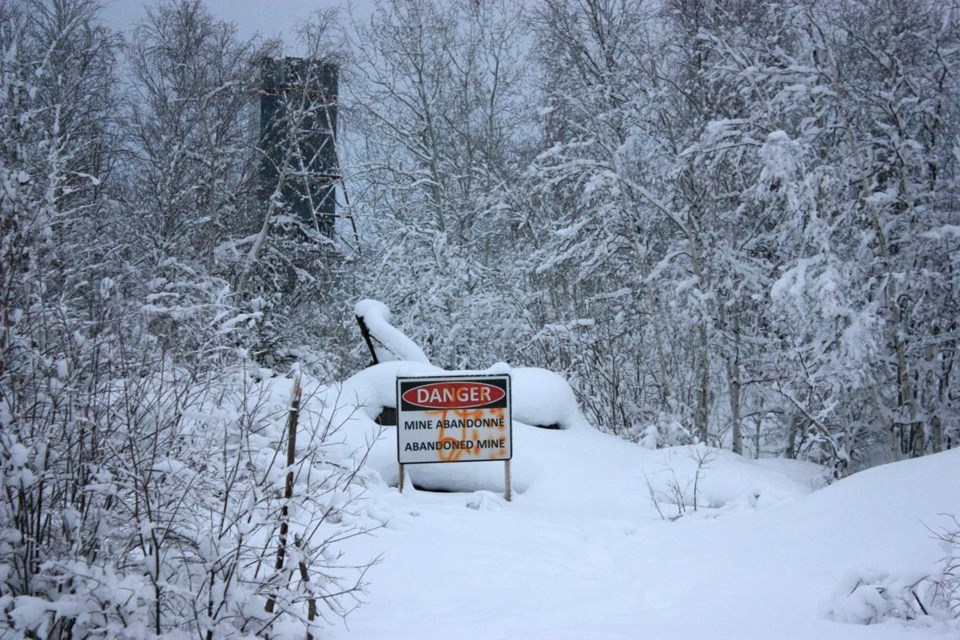YELLOWKNIFE — Environmental advocates say costly cleanups of former non-renewable resource projects in the North show the need for better planning.Â
Three of Canada’s top five most expensive federal contaminated sites are abandoned mines in the North: Giant Mine in the Northwest Territories at an estimated $4.38 billion and the Faro and United Keno Hill mines in Yukon at $1 billion and $125 million, respectively. Â
Former resource extraction projects are also among the most costly sites where the territories are responsible.
Lewis Rifkind, a mining analyst with the Yukon Conservation Society, said unlike contaminated sites where federal money benefits the territory's economy, sites under territorial control have "terrible" financial and environmental consequences.Â
"All the money the Yukon government … spends on that could be spent on other things that we actually need," he said.Â
Yukon's 2021-2022 public accounts include an estimated $94.6 million to remediate 100 sites. The two most expensive are Wolverine Mine at $39 million and the Wellgreen mill and tailings site at an estimated $15.5 million.Â
Rifkind said mining companies take the profits and abandon sites when things go bad, leaving taxpayers with the mess.Â
"We're privatizing the profit and socializing the risk. That has to change."
He said it's critical to calculate the appropriate financial security, a deposit for the estimated cleanup cost once a mine is finished operating, and get the money upfront.Â
The bankrupt former owner of Wolverine Mine, which ceased operations in 2015, did not pay the full $35.5 million in financial security required for closure and remediation.Â
The Yukon government successfully petitioned to put Yukon Zinc Corp. into receivership in 2019, but the court-appointed receiver was unable to find a viable buyer.
Since 2018, the Yukon government said it has spent $27.9 million on the site, with roughly $10.5 million covered by financial security posted by Yukon Zinc. The territory awarded a more than $12 million contract for care and maintenance of the site last month.Â
The old mill and tailings site for the Wellgreen mine was constructed in 1972 and operated for about a year before it closed. While the federal government approved the tailings dam at the time, assessments later found further remediation was needed.
Responsibility for the site transferred to the territory during devolution in 2003. The Yukon government said it's discussing a cost-sharing agreement with the federal government.Â
In the N.W.T., the 2021-2022 public accounts include more than $99 million in environmental liabilities for 248 sites. The greatest costs are for abandoned mines, with nine sites estimated at more than $31 million.
The N.W.T. government declined to provide site-specific estimates, saying that could affect the procurement process.
The territory said, however, liabilities include sites where it has not accepted full responsibility. It said the two most expensive ones where the territory has accepted responsibility are a former power plant and tank farm, and the former Icicle Inn in Sachs Harbour.Â
N.W.T. legislature member Kevin O'Reilly, a longtime environmental advocate who has pushed for greater transparency around contaminated sites, said they underscore the importance of prevention. Â
O'Reilly pointed to the Cameron Hills oil and gas field, which stopped production in 2015 and whose owner Strategic Oil and Gas Ltd. went into receivership in 2020. He said when the territory took responsibility for the property during devolution in 2014, there was not an approved closure plan or estimated reclamation cost.
Audit director Kelsey Hogg said during a review of the N.W.T.'s latest public accounts in December, environmental liabilities had increased by $20 million largely due to the territory's accrual of Cameron Hills.Â
O'Reilly believes it will ultimately cost taxpayers more than double that figure.
"I'd much rather spend that money on housing, health care or education than cleaning up contaminated sites that should have been prevented or we shouldn't have accepted in the first place" he said.Â
The territorial government recently issued a survey saying it's working with the federal government to explore the viability of a remediation economy in the N.W.T., with a focus on keeping economic benefits in the territory.Â
When Nunavut became a territory in 1999, it took over ownership of sites and activities associated with tank farms and power plants. It has yet to undergo devolution.
The two most expensive territorial contaminated sites are the old Clyde River town site, at nearly $4 million, and Clyde River’s old solid waste dump, estimated to cost more than $2.4 million.
The settlement, which was originally established by the Hudson Bay Company as a trading post on the east side of Patricia Bay in the 1920s, was abandoned when it moved to the west side of the bay in 1970.Â
This report by The Canadian Press was first published Jan. 22, 2023.Â
This story was produced with the financial assistance of the Meta and Canadian Press News Fellowship.
Emily Blake, The Canadian Press



